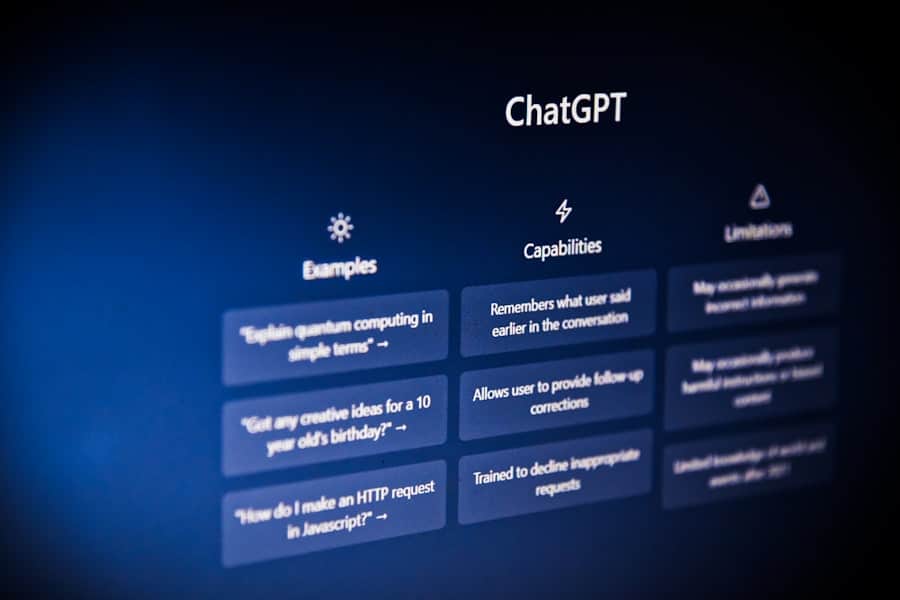In the contemporary landscape of remote work, Git-based collaboration has emerged as a pivotal tool for organizations seeking to enhance their hiring processes. Git, originally designed for version control in software development, has transcended its initial purpose to become a cornerstone of collaborative workflows across various industries. The significance of Git in remote hiring lies in its ability to facilitate real-time collaboration among geographically dispersed teams, allowing for a more dynamic and interactive evaluation of candidates.
This is particularly crucial in a remote hiring context, where traditional face-to-face interactions are often replaced by digital communication. Moreover, Git’s inherent structure promotes transparency and accountability, which are essential elements in the hiring process. By utilizing Git repositories, hiring teams can track changes, contributions, and discussions related to candidate evaluations and project assessments.
This level of visibility not only fosters trust among team members but also ensures that all voices are heard in the decision-making process. As organizations increasingly adopt remote work models, the integration of Git into their hiring practices becomes not just beneficial but essential for attracting and retaining top talent.
Key Takeaways
- Git-based collaboration is crucial for remote hiring as it allows for seamless communication, feedback, and project management.
- Streamlining the hiring process is made easier with Git-based collaboration, as it enables efficient tracking of candidate progress and feedback.
- Leveraging Git for communication and feedback ensures that all team members are on the same page, leading to more effective collaboration.
- Utilizing Git for project management in remote teams allows for better organization, tracking, and transparency in the hiring process.
- Ensuring security and privacy in Git-based collaboration is essential for protecting sensitive hiring information and candidate data.
How Git-Based Collaboration Streamlines the Hiring Process
The integration of Git into the hiring process significantly streamlines various stages, from candidate evaluation to onboarding. One of the most notable advantages is the ability to create a centralized repository for all candidate-related materials. This includes resumes, cover letters, coding samples, and project submissions.
By having all relevant documents in one place, hiring teams can easily access and review candidate information without the hassle of sifting through multiple emails or disparate file storage systems. This centralized approach not only saves time but also enhances the overall organization of the hiring process. Additionally, Git allows for collaborative assessments through features such as pull requests and code reviews.
For instance, when a candidate submits a coding challenge via a Git repository, team members can comment directly on specific lines of code, providing targeted feedback and insights. This method not only enriches the evaluation process but also simulates real-world scenarios where candidates would need to collaborate with team members on projects. By engaging in this collaborative assessment, hiring teams can better gauge a candidate’s technical skills and their ability to work within a team dynamic, which are critical factors in remote work environments.
Leveraging Git for Efficient Communication and Feedback
Effective communication is paramount in any hiring process, and Git provides a robust framework for facilitating this interaction among team members. The platform’s built-in features enable seamless communication through comments, issues, and discussions tied directly to specific projects or candidates. For example, when a team member reviews a candidate’s submission, they can leave comments that are visible to all stakeholders involved in the hiring decision.
This transparency ensures that everyone is on the same page regarding candidate evaluations and reduces the likelihood of miscommunication. Furthermore, Git’s branching model allows teams to explore different perspectives on a candidate’s fit without disrupting the main evaluation process. Team members can create branches to discuss alternative viewpoints or concerns about a candidate’s qualifications.
This flexibility encourages open dialogue and fosters a culture of constructive feedback, which is essential for making informed hiring decisions. By leveraging Git for communication, organizations can create an environment where feedback is not only welcomed but actively sought after, leading to more thorough and thoughtful evaluations.
Utilizing Git for Seamless Project Management in Remote Teams
Project management is another area where Git excels, particularly in remote teams where coordination can be challenging. By utilizing Git’s project management features, such as milestones and issues, hiring teams can effectively track their progress throughout the recruitment process. For instance, teams can set specific milestones for each stage of the hiring process—such as initial screenings, technical interviews, and final evaluations—ensuring that everyone is aware of deadlines and responsibilities.
Moreover, Git’s issue tracking system allows teams to document any challenges or roadblocks encountered during the hiring process. This documentation serves as a valuable resource for future hiring cycles, enabling teams to identify patterns or recurring issues that may need addressing. By maintaining a clear record of project management activities within Git, organizations can continuously improve their hiring processes and adapt to the evolving needs of their remote teams.
Ensuring Security and Privacy in Git-Based Collaboration for Hiring
As organizations increasingly rely on Git-based collaboration for remote hiring, ensuring security and privacy becomes paramount. Sensitive candidate information must be protected from unauthorized access while still allowing relevant team members to collaborate effectively. One way to achieve this is by implementing strict access controls within Git repositories.
Organizations can set permissions that restrict access to certain files or branches based on team roles, ensuring that only authorized personnel can view sensitive information. Additionally, employing encryption methods for data at rest and in transit can further enhance security measures. For instance, using SSH keys for authentication ensures that only trusted users can access the repository.
Furthermore, organizations should establish clear policies regarding data retention and deletion to comply with privacy regulations such as GDPR or CCPBy prioritizing security and privacy in their Git-based collaboration efforts, organizations can build trust with candidates while safeguarding their sensitive information.
Overcoming Challenges and Best Practices for Git-Based Collaboration in Remote Hiring
While Git-based collaboration offers numerous advantages for remote hiring, it is not without its challenges. One common issue is the steep learning curve associated with using Git effectively. Many team members may not be familiar with version control systems or may have limited experience with Git specifically.
To overcome this challenge, organizations should invest in training programs that equip team members with the necessary skills to navigate Git confidently. Providing resources such as tutorials or workshops can help demystify the platform and encourage its adoption across the team. Another challenge lies in maintaining engagement among remote team members during the hiring process.
Without face-to-face interactions, it can be easy for team members to feel disconnected from one another and from the candidates being evaluated. To combat this issue, organizations should foster a culture of collaboration by encouraging regular check-ins and discussions about candidates within the Git platform. Utilizing video conferencing tools alongside Git can also enhance communication and engagement among team members, ensuring that everyone remains invested in the hiring process.
The Impact of Git-Based Collaboration on Remote Hiring Success
The impact of Git-based collaboration on remote hiring success is profound and multifaceted. By streamlining communication, enhancing project management capabilities, and fostering transparency among team members, organizations can make more informed hiring decisions that align with their strategic goals. The collaborative nature of Git allows for diverse perspectives to be considered during candidate evaluations, ultimately leading to better hires who are well-suited for remote work environments.
Moreover, candidates themselves benefit from this collaborative approach.
This transparency not only enhances the candidate experience but also allows them to showcase their skills in a manner that reflects real-world scenarios they would encounter if hired.
As organizations continue to embrace remote work models, the successful integration of Git-based collaboration into their hiring processes will likely become a defining factor in attracting top talent.
Future Trends and Innovations in Git-Based Collaboration for Remote Hiring
Looking ahead, several trends and innovations are poised to shape the future of Git-based collaboration in remote hiring. One notable trend is the increasing integration of artificial intelligence (AI) into recruitment processes facilitated by Git platforms. AI-driven tools can analyze candidate submissions within Git repositories to identify patterns or flag potential red flags based on historical data.
This technology could streamline initial screenings and help hiring teams focus their efforts on candidates who are most likely to succeed. Additionally, as remote work continues to evolve, there may be a shift towards more asynchronous collaboration methods within Git platforms. This could involve enhanced features that allow team members to contribute feedback or evaluations at their convenience while still maintaining a cohesive workflow.
Innovations such as automated notifications or reminders could further enhance this asynchronous collaboration model.
The future of remote hiring will undoubtedly be shaped by these advancements as organizations strive to create more efficient and effective recruitment processes that align with the demands of an increasingly digital workforce.
In addition to exploring The Role of Git-Based Collaboration in Remote Hiring, readers may also find the article on Discover the Best Paying Jobs in Tech 2023 to be insightful. This article delves into the top-paying jobs in the tech industry for the upcoming year, providing valuable information for those looking to advance their careers in this field. By understanding the current trends and demands in tech jobs, individuals can make informed decisions about their career paths and potential opportunities for growth.
FAQs
What is Git-based collaboration?
Git-based collaboration refers to the use of the version control system Git to facilitate collaboration among remote teams. It allows team members to work on the same codebase simultaneously, track changes, and merge their work seamlessly.
How does Git-based collaboration facilitate remote hiring?
Git-based collaboration allows remote hiring teams to assess a candidate’s coding skills by reviewing their contributions to open source projects or personal repositories. This provides a more comprehensive understanding of a candidate’s abilities compared to traditional hiring methods.
What are the benefits of using Git for remote hiring?
Using Git for remote hiring allows for a more efficient and transparent evaluation process. It enables hiring teams to assess a candidate’s coding skills in real-world scenarios, fosters collaboration among remote team members, and provides a clear record of a candidate’s work.
What are some common Git-based collaboration tools used in remote hiring?
Common Git-based collaboration tools used in remote hiring include GitHub, GitLab, and Bitbucket. These platforms provide features such as code review, issue tracking, and project management, which are valuable for evaluating candidates and managing remote teams.
How does Git-based collaboration contribute to a remote team’s success?
Git-based collaboration contributes to a remote team’s success by enabling seamless coordination, version control, and code sharing. It fosters a culture of transparency and accountability, which are essential for effective remote collaboration.



